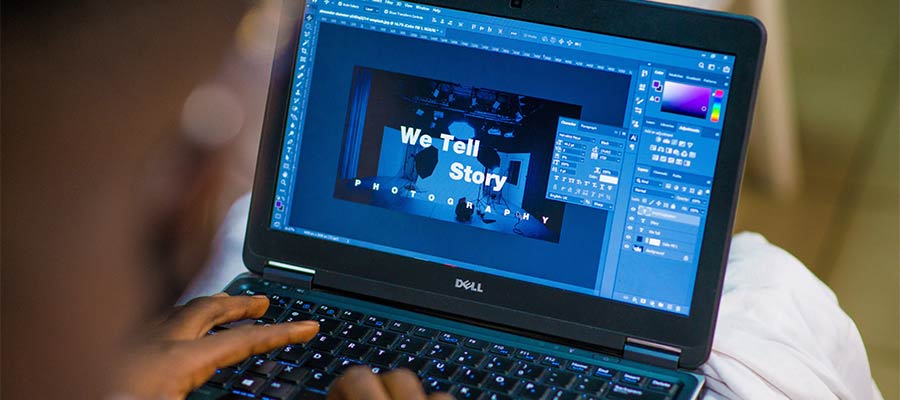Reasons To Change Your Web Design Workflow
As an industry, web design doesn’t sit still. It seems like there’s an almost-daily barrage of new tools and technologies to explore. And some will eventually become standard practice.
That’s why web designers need to evolve. It’s a key factor in long-term success. But making the transition to the “next big thing” isn’t easy.
There are challenges involved. For one, changing your workflow is disruptive. Not to mention the learning curve that comes with something new.
Motivation, or a lack thereof, can also play a role. For example, we may think that learning React would be beneficial. We may even put it on our to-do list. But what motivates us to start the process?
To put it mildly – it’s a complicated situation. But we’re here to help! Let’s look at a few motivating factors that can help push you in the right direction.
You’re Missing Out on Projects
Just as web design changes, so do project requirements. Clients take notice of both design and functionality trends. Thus, they have a higher level of expectation.
Consider the definition of a “basic” website. In the late 1990s or early 2000s, it was likely a static site. There was no content management component. And a contact form may have served as the most complex functionality included.
That’s no longer the case. Clients who want to make site edits will require a content management system (CMS) like WordPress. They may also want to accept payments and distribute members-only content.
Sure, the market for static HTML is still there – and use cases abound. But even those sites are built differently these days.
Keeping up with best practices should serve as a motivator. Otherwise, you risk missing out on interesting (and potentially lucrative) projects.

Your Workflow Is Cumbersome for a Colleague
Even solo freelancers collaborate with others. Therefore, the ability to share work is critical for success. If things don’t go smoothly, it could impact the final product.
How we work is important. For instance, you might have a process for managing tasks. But what if it’s not easily shared with others? That might leave your collaborators out of the loop.
The beauty of working alone is that you can do things your way. However, sharing a role with others changes the game. You may need to adjust to better facilitate working together.
In practice, it could mean using a project management platform. This would allow stakeholders to get on the same page. Efficiency will increase. And the outcome will likely be better.
That’s why it’s worth asking yourself if a particular workflow still makes sense. It’s easy to fall into the trap of continuing to do unproductive things. A reset here could be just what you need.

The Tools You Use Are Obsolete
Not all tools change with the times. And we’ll often use a tool simply because it is the best available option.
The right tool can empower us. But obsolete tools can hold us back. They can make it more difficult to follow best practices. Plus, they may also make us less efficient.
On the other hand, there’s also the benefit of comfort. And it’s often easier to stick with what we know – even if it’s no longer the most modern solution.
One example: using Adobe Photoshop to create website mockups. It still works well enough for this purpose. And the familiar UI makes it a favorite among veteran designers.
But modern prototyping has changed significantly. They account for multiple screen sizes and offer more web-focused features. Why, even Adobe has moved on with their XD app.
Age alone doesn’t mean you have to abandon a tool. But it doesn’t hurt to look around and try something new. Perhaps you’ll find a better fit for your needs.

You’re Stuck in a Creative Rut
Creativity can be a fragile thing. Some days we have it. Sometimes it disappears into the atmosphere. And although workflow isn’t the only cause for a creative rut, it can contribute to one.
This may also be the most difficult issue to diagnose. We can blame our daily routine for that. Many of us like routines because we don’t have to think about them. Therefore, we might not recognize habits that take away our creative edge.
So, how do you break away from things that hamper us? It starts with a little self-analysis.
Think about the times when you’re feeling most creative. What factors are involved? For instance, you might find that you’re “in the zone” at a certain time of day. Or maybe when you turn off the notifications on your phone. Or when you stick to one task at a time. The possibilities are endless.
The idea is to find what fuels your creativity. From there, you can adjust your workflow to match.

Bring Your Workflow Up To Speed
None of us has a perfect workflow. And it’s unlikely that any two web designers will do things in the same way. That’s a feature – not a bug.
Therefore, taking a closer look at how we work is healthy. Are the tools and technologies we use helping us reach our full potential? Or is there something getting in the way of success?
We don’t have to force a change. But there are so many options and life hacks out there. And we get to choose the ones that work best for us.
The answers will be different for each of us. That’s part of what makes web design unique.